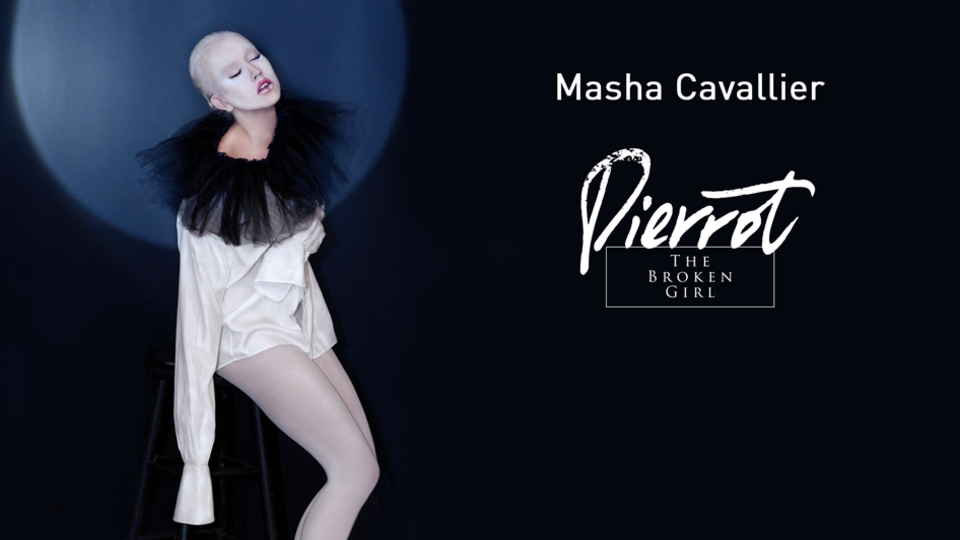"Pierrot is an attempt to find a visible form of invisible, spiritual content. When you try on his character you are getting exposed and are letting go of your comfortable mask you like to wear on the public. Your success, nonchalance, importance, and status are no longer relevant.
He is subtle and sophisticated, and almost always contradictory - he is cheerful but unhappy; he suffers while in love; he is sad, but his soul sings! He is the soul itself."
- Masha Cavallier
DDM: You have called your exhibition “Pierrot - the broken girl”. What is it about?
MC: Pierrot is an attempt to find a visible form of invisible, spiritual content. Remember the magic of traditional film photography processes when the images are getting revealed after the chemicals are applied. What seemed invisible just seconds ago are gradually taking shape and could expose the details that weren’t noticeable at the time when the image was taken.
Pierrot is a suffering soul. When you try on his character you are getting exposed and are letting go of your comfortable mask you like to wear on the public. Your success, nonchalance, importance, and status are no longer relevant.
DDM: Do you mean the pain of disappointment?
MC: It doesn’t matter what causes pain. I feel like a man himself is the main reason for his sufferings. If you are familiar with Dostoevsky or Bulgakov you know what I’m talking about.
DDM: Invariably each of us experiences some kind of troubles in our lives. Does this mean there’s Pierrot in every one of us?
MC: Not necessarily. Not everyone feels like examining himself that deep. Most of us prefer to be content with his or her public image. Admitting to yourself that you are vulnerable, not being afraid of exposing your weaknesses and accepting your Pierrot as a product of deep self-analysis, anxiety and even physical pain - those are starting ingredients that symbolize the beginning of inner changes, spiritual growth or even complete rebirth.
DDM: Who are your models?
MC: This project is not about abstract models. There are real people along with their personal stories there. As a photographer, I want to get behind the curtain. It is important for me to know what is going on in the shadows behind the scenes. I puzzle out my models if you will. For that reason, I am extremely grateful to the girls who agreed to participate in this project. Let’s face it, not everyone is prepared to see himself as this character. We are not used to being unglamorous and fully exposed in the eyes of society today. In fact, it’s almost considered a feat these days.
DDM: How did this idea come about?
MC: In 2013 I made my first attempt to take a stab at this project. I was inspired by one of my friend - Anastasia M. Who has very deep, creative and strong personality on the outside yet extremely gullible and vulnerable one on the inside. I was desperately trying to figure out her personality because it seemed like a mystical riddle to me. I was driven by a desire to find an image that would depict her inner world. And Pierrot turned out to be the one I ended up with.
DDM: The Pierrot character was widely used before. Is your Pierrot unique in any way if at all?
MC: I was trying to avoid abstractness. The strongest metaphor I managed to find is a nostalgic image of the chansonnier, a medieval French minstrel created by Alexander Vertinsky, “Lunar Pierrot” by the Belgian poet Albert Giraud and beauty in motion by Rudolph Nureyev in “Pierrot Lunaire Ballet” as well as versions of Pierrot created by impressionists of the 19th and 20th centuries.
Mysterious Pierrot has always been interesting, handsome, allegorical and fashionable. He is subtle and sophisticated, and almost always contradictory - he is cheerful but unhappy; he suffers while in love; he is sad, but his soul sings! He is the soul itself.
Since 2013 I’ve come along way with my subject and I’m happy to feature the best works in my very first personal exhibition “Pierrot - the broken girl”.

